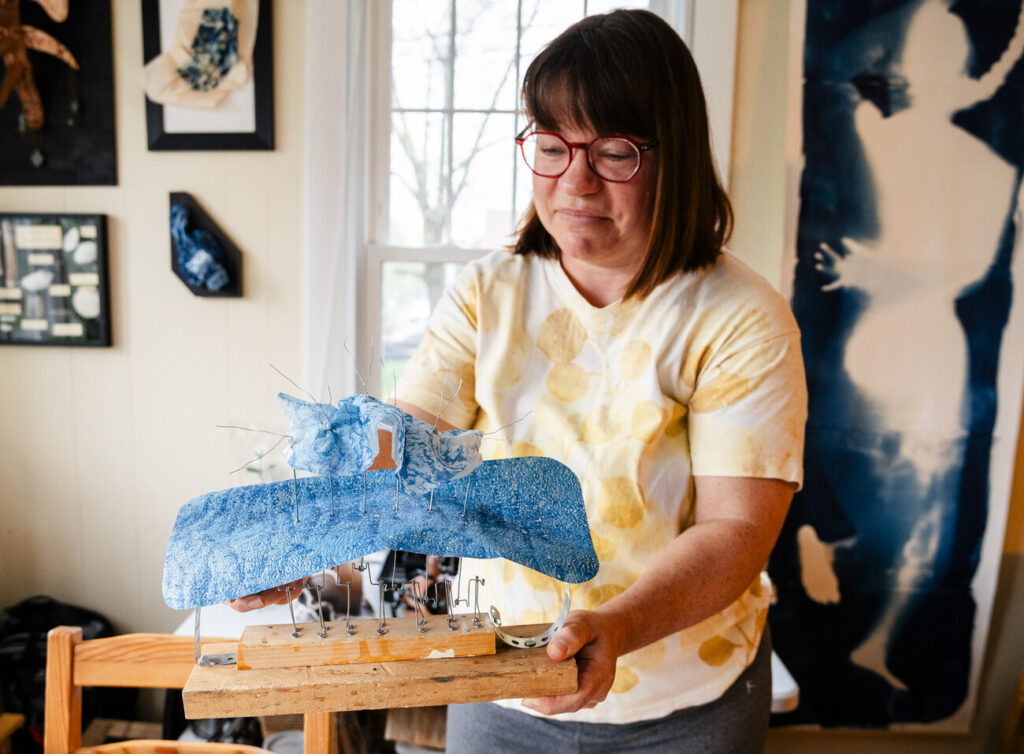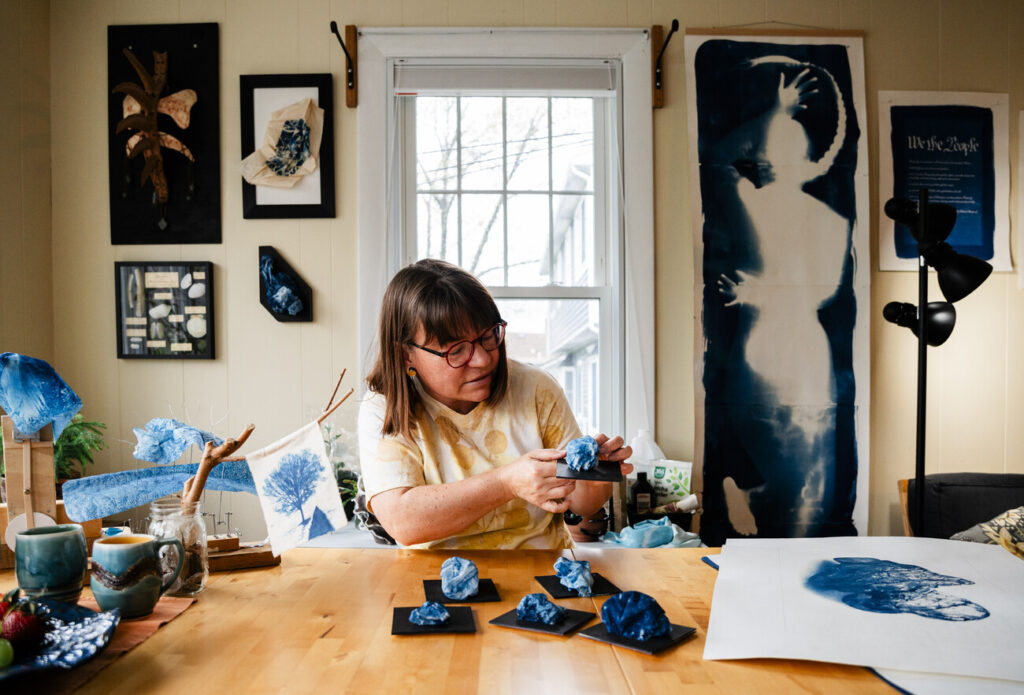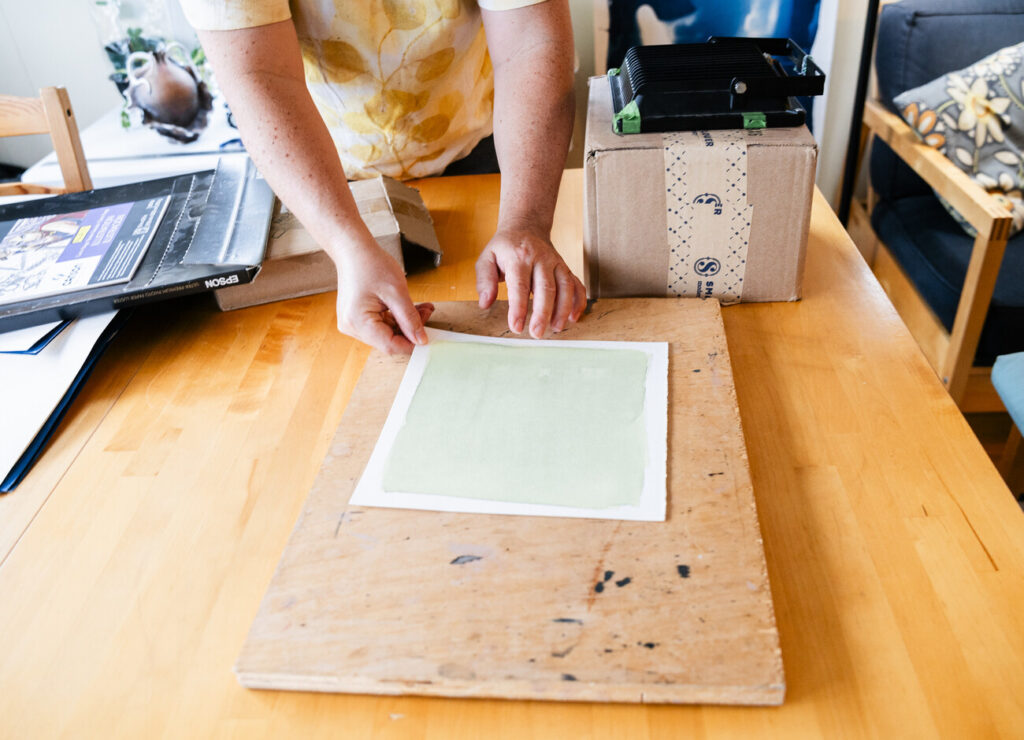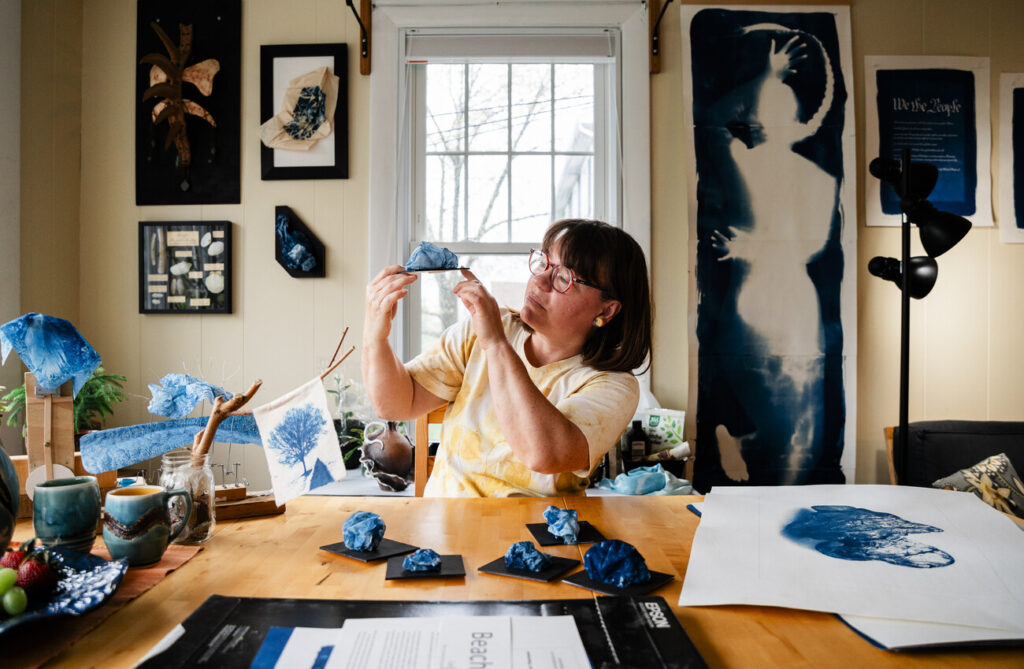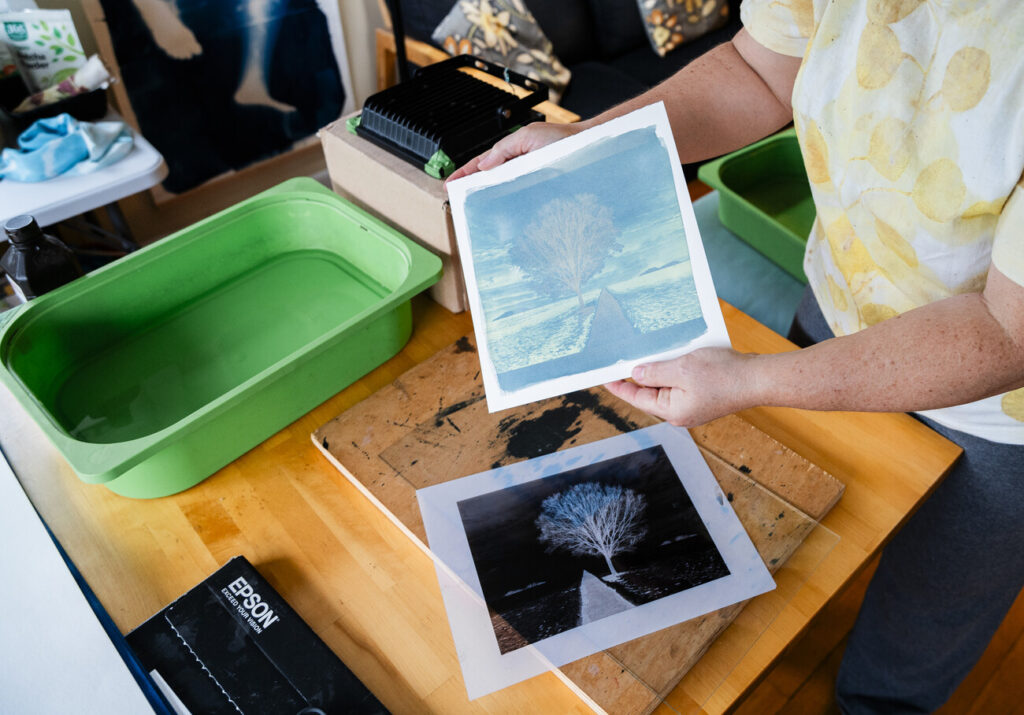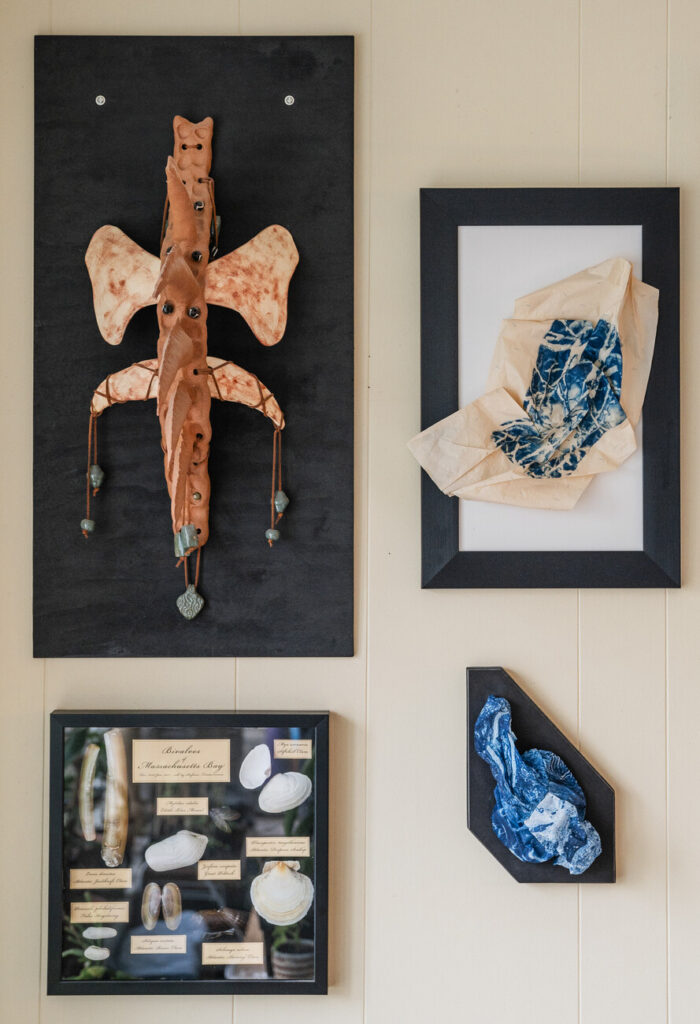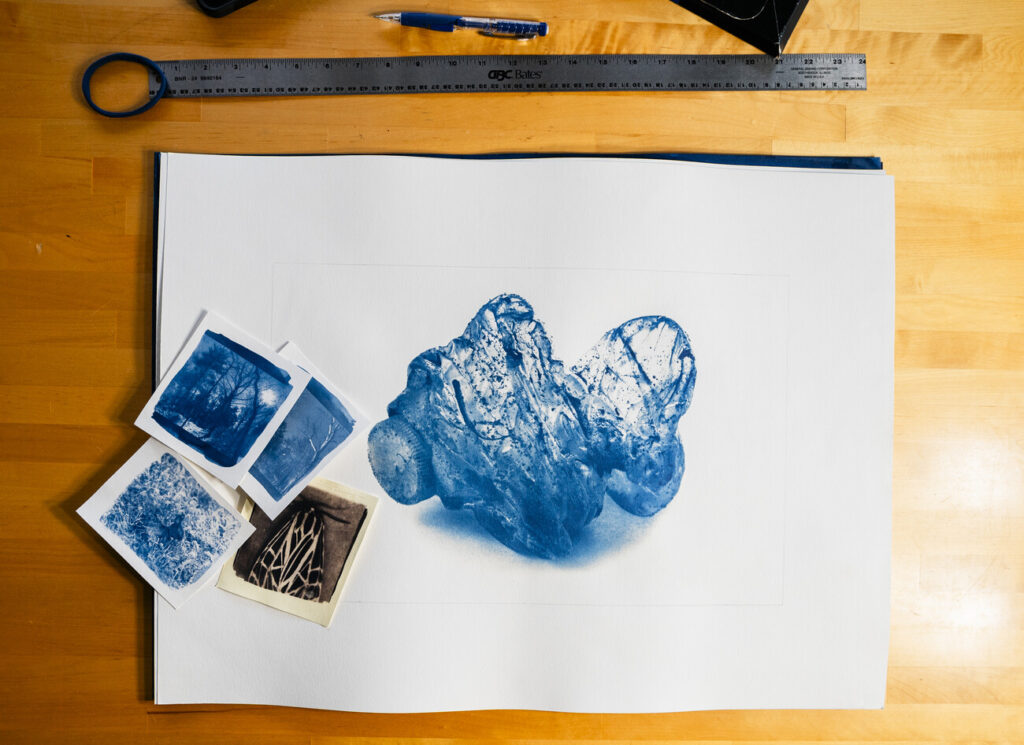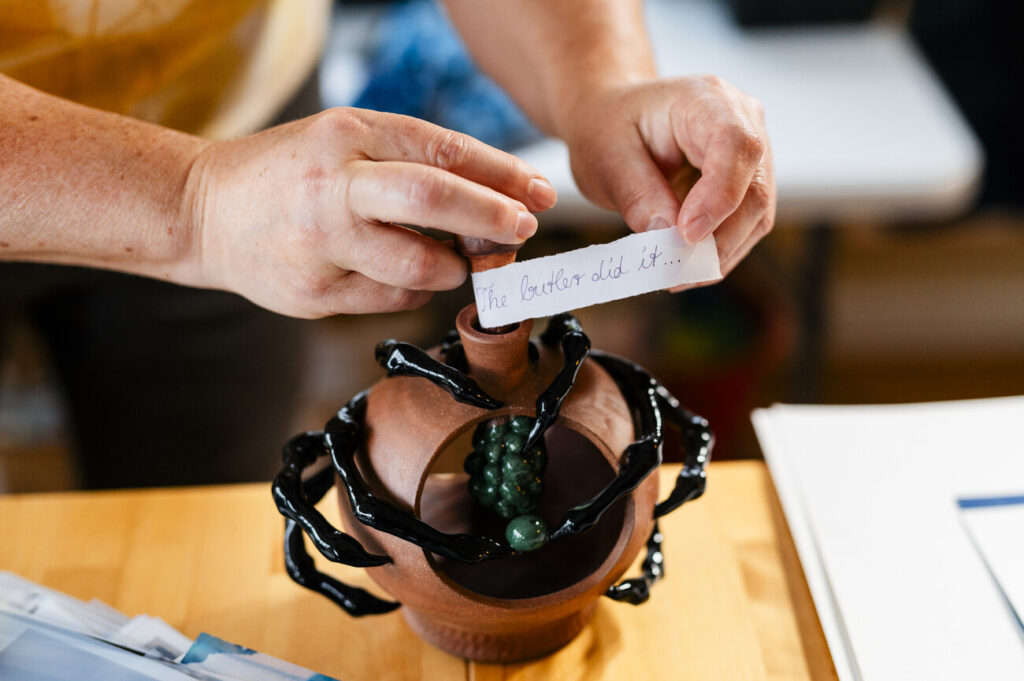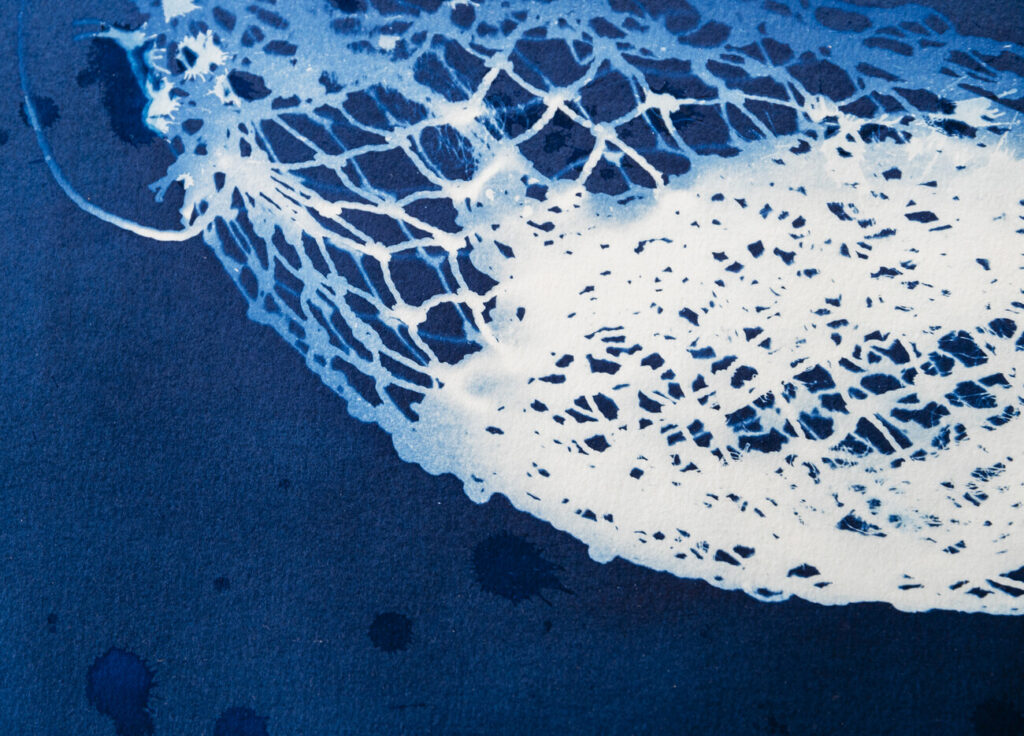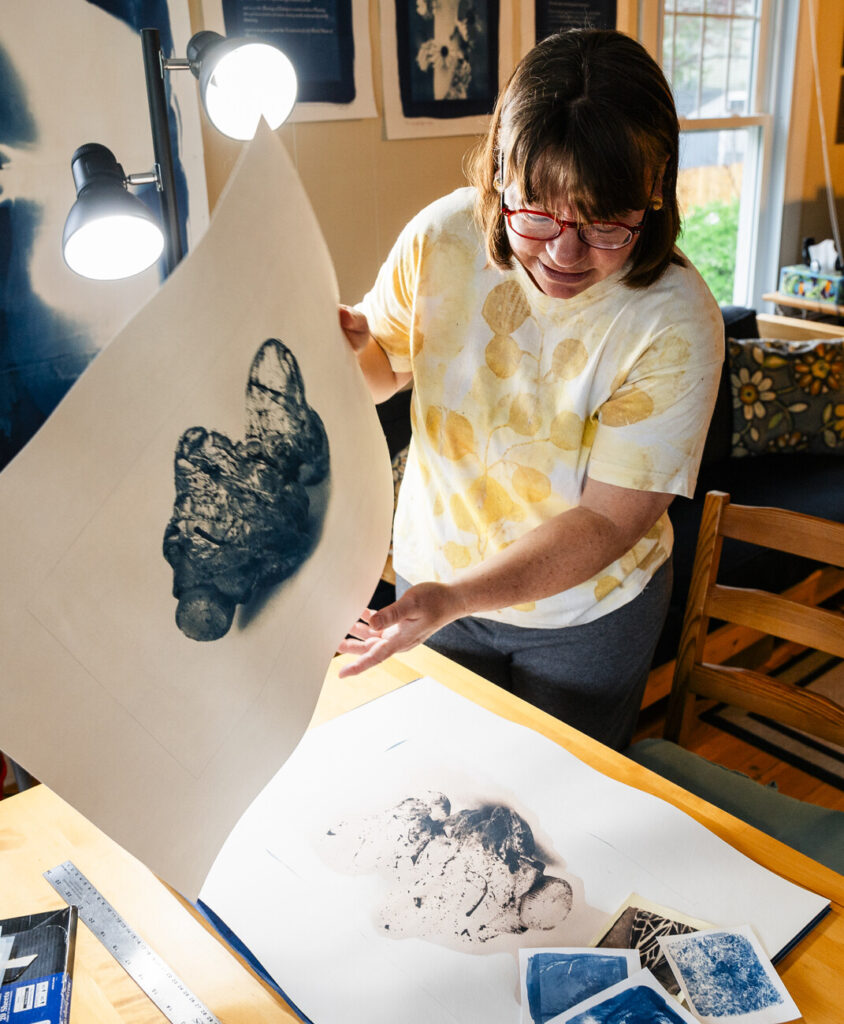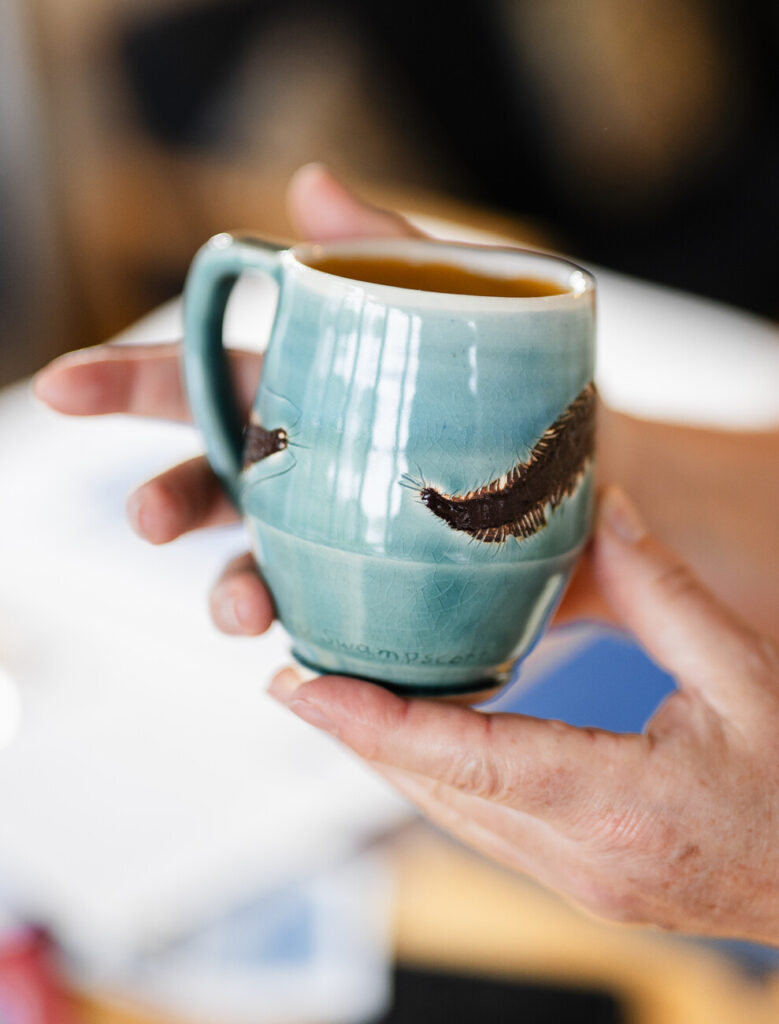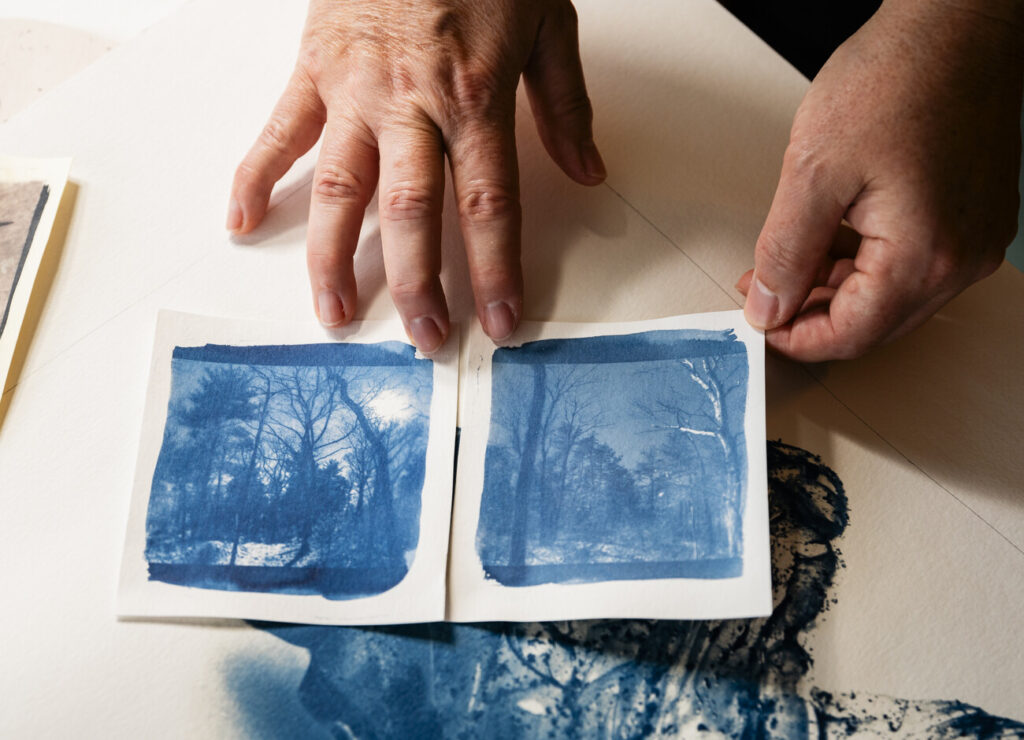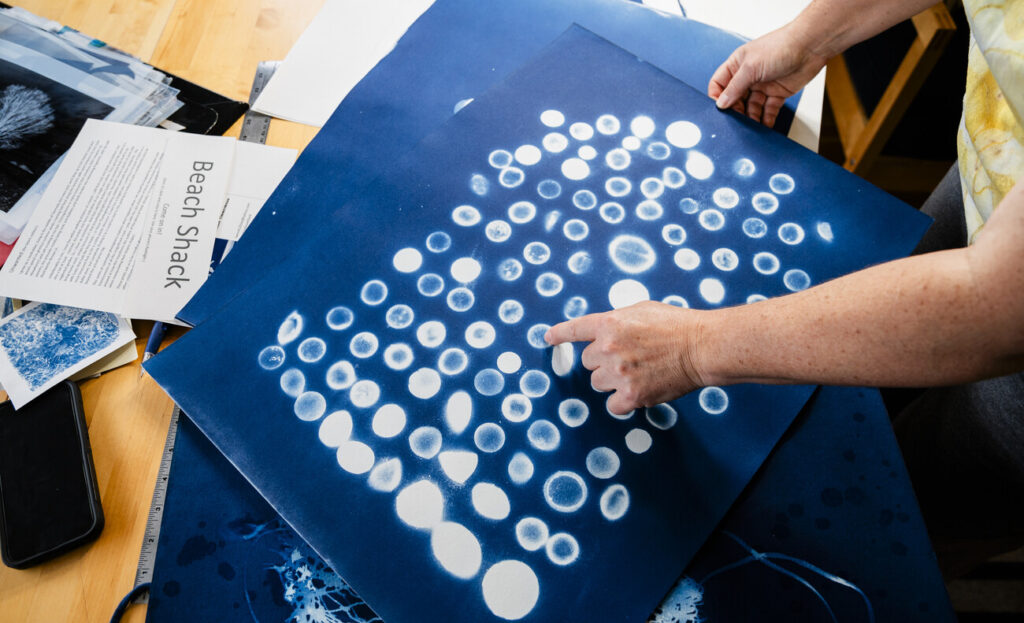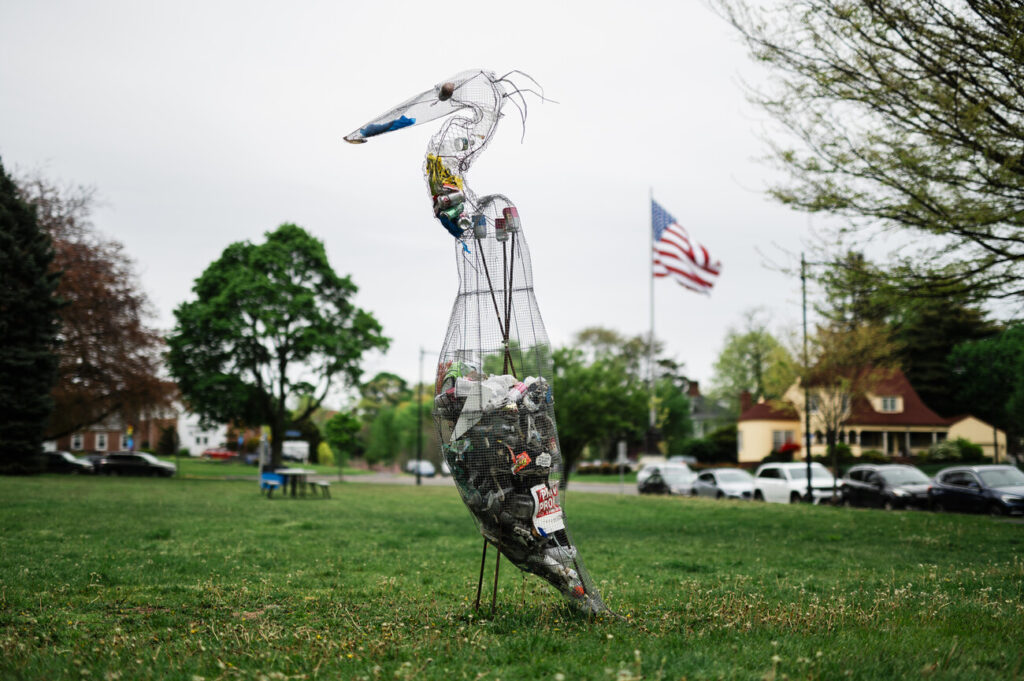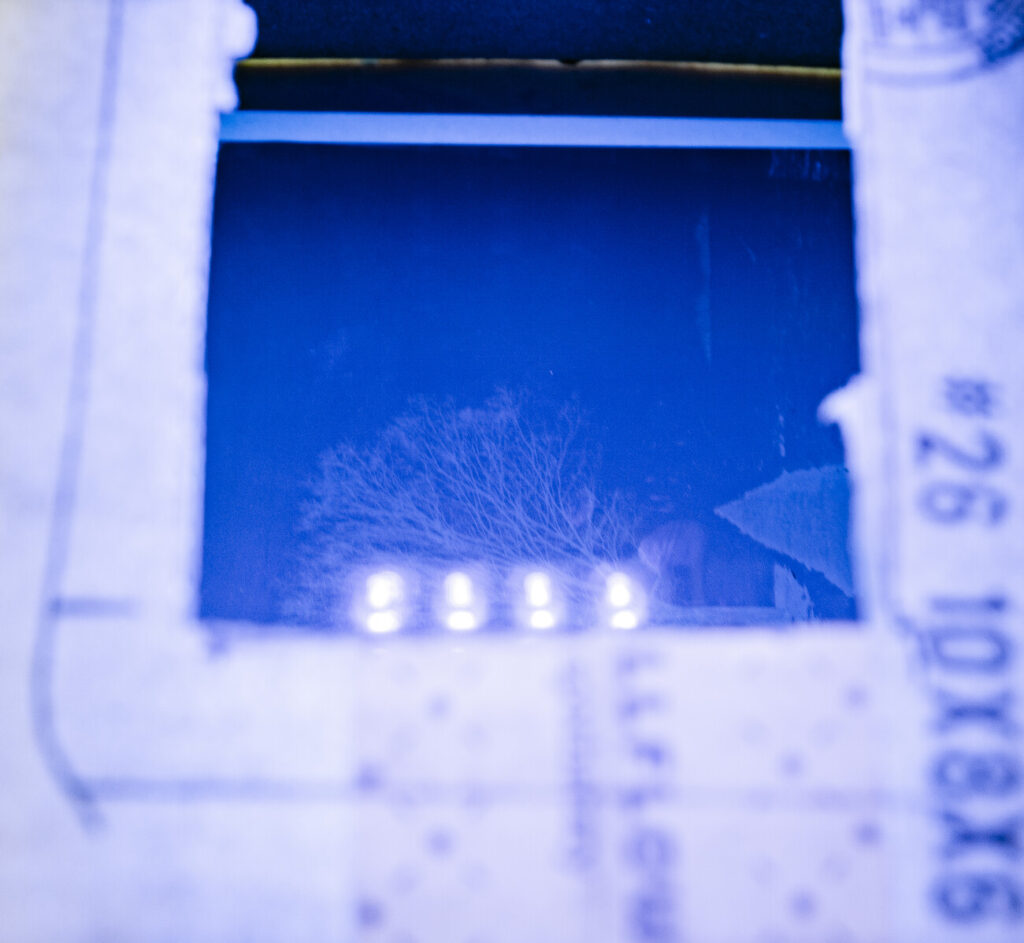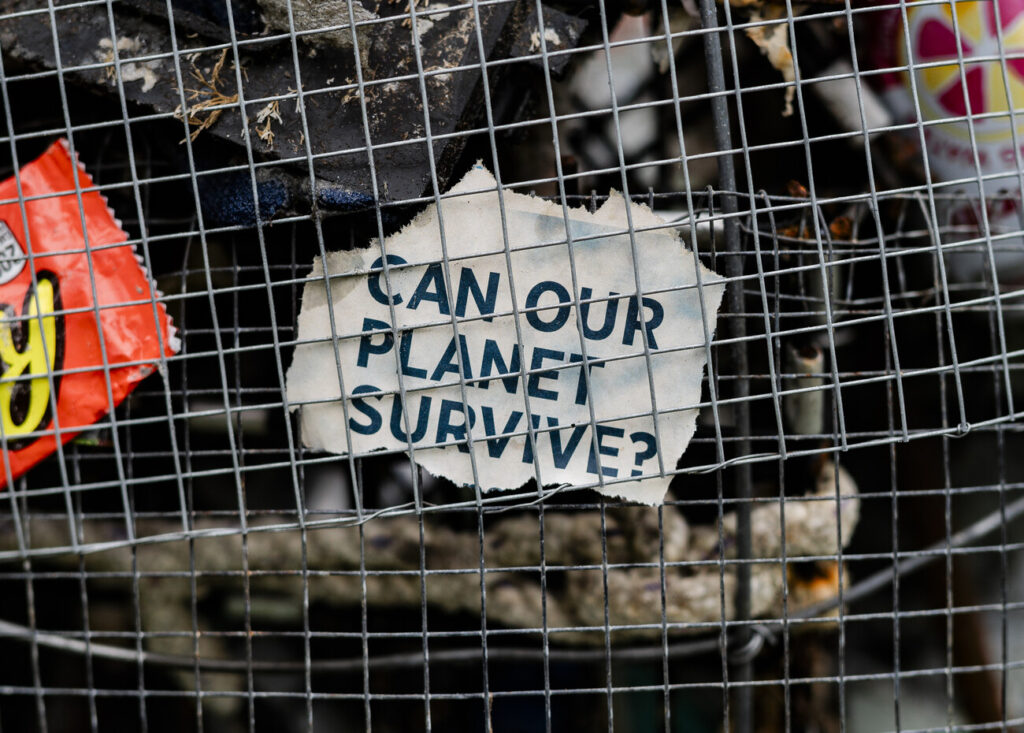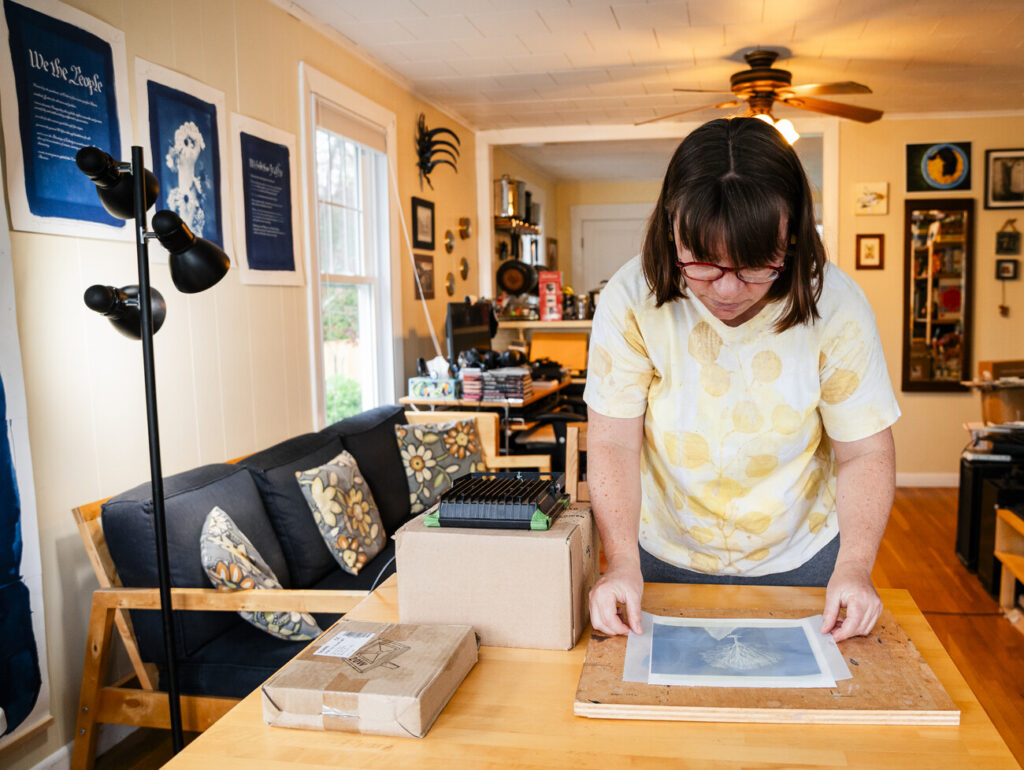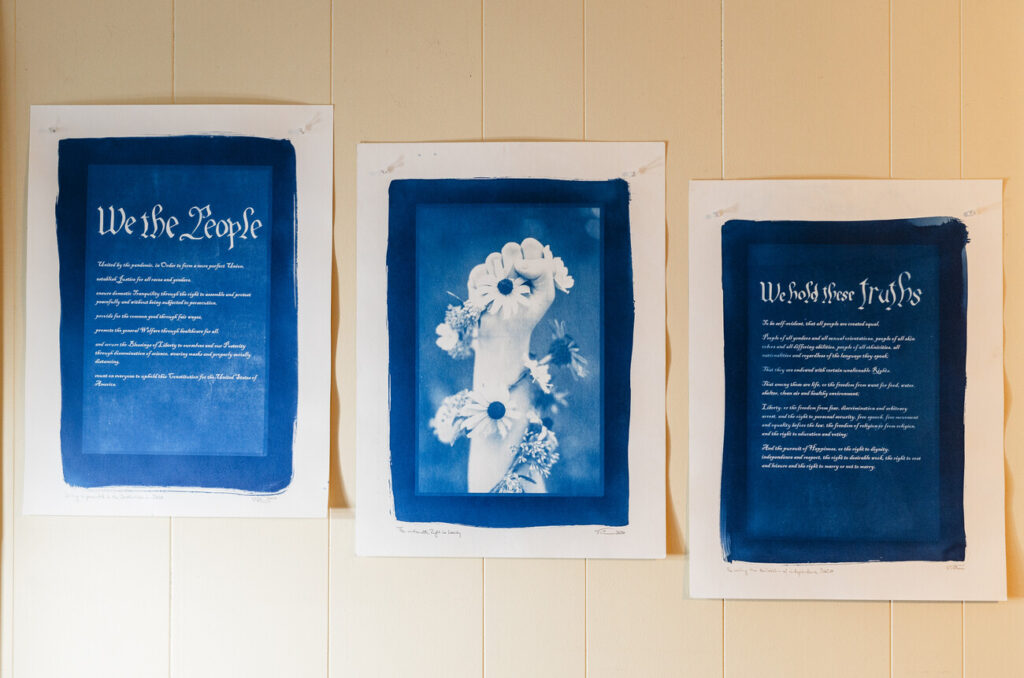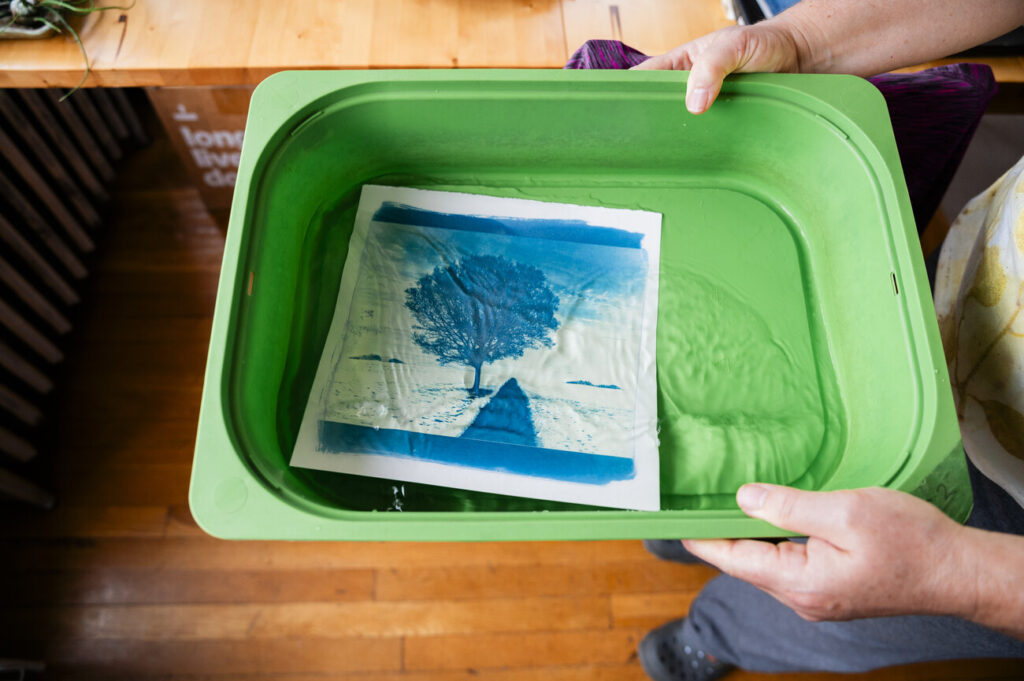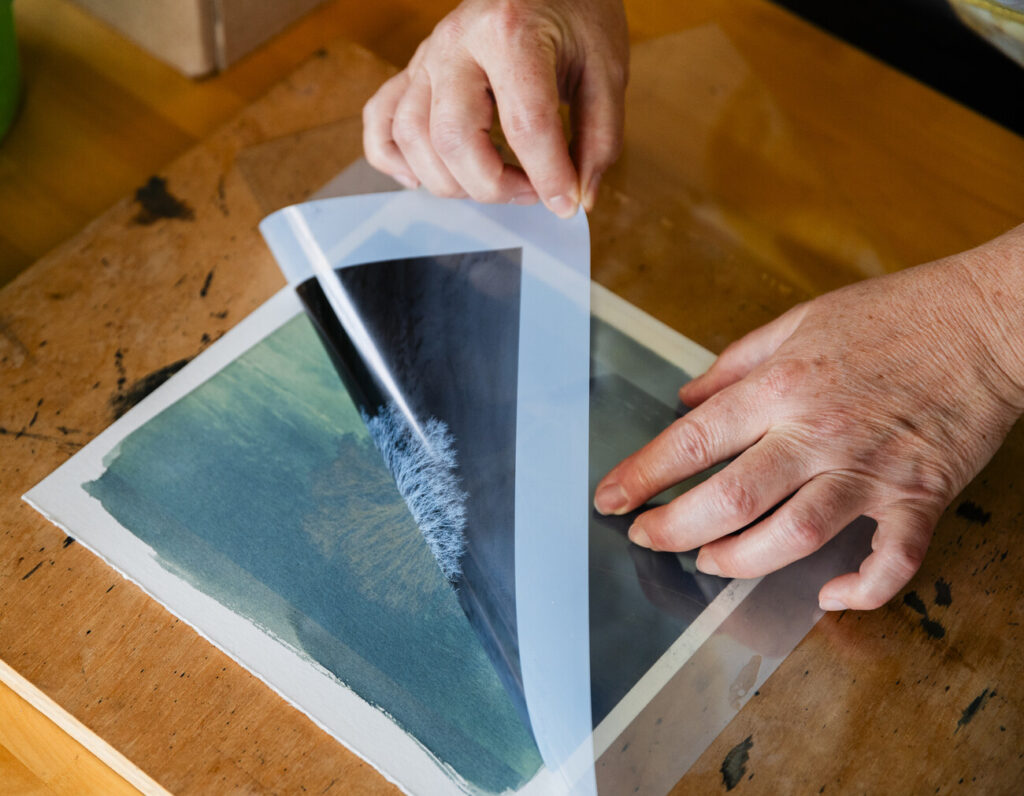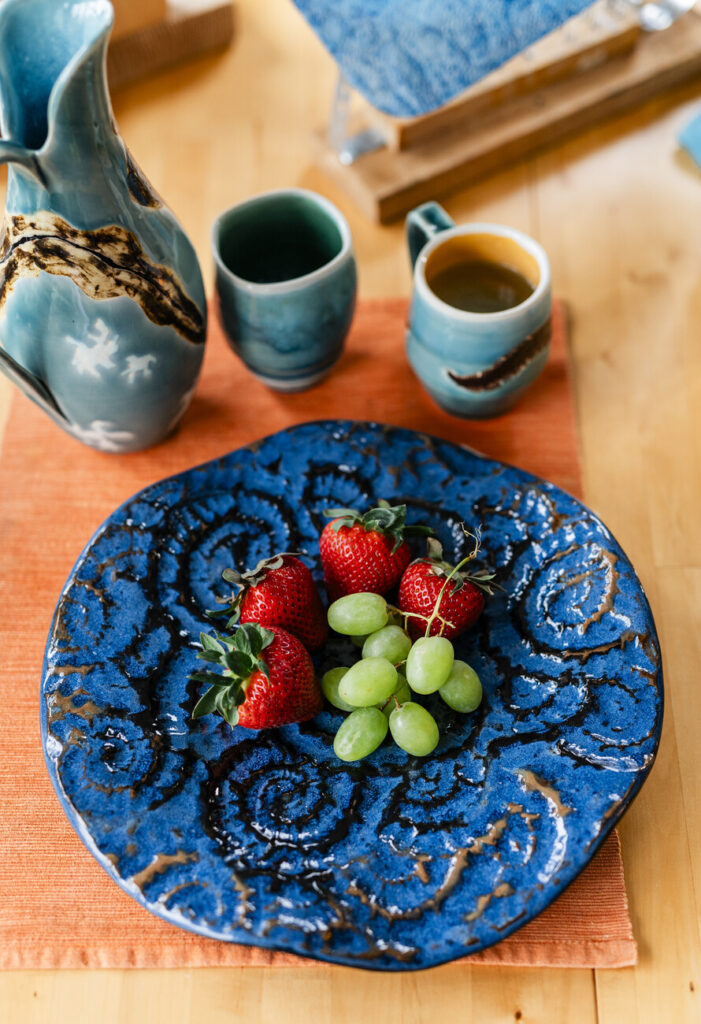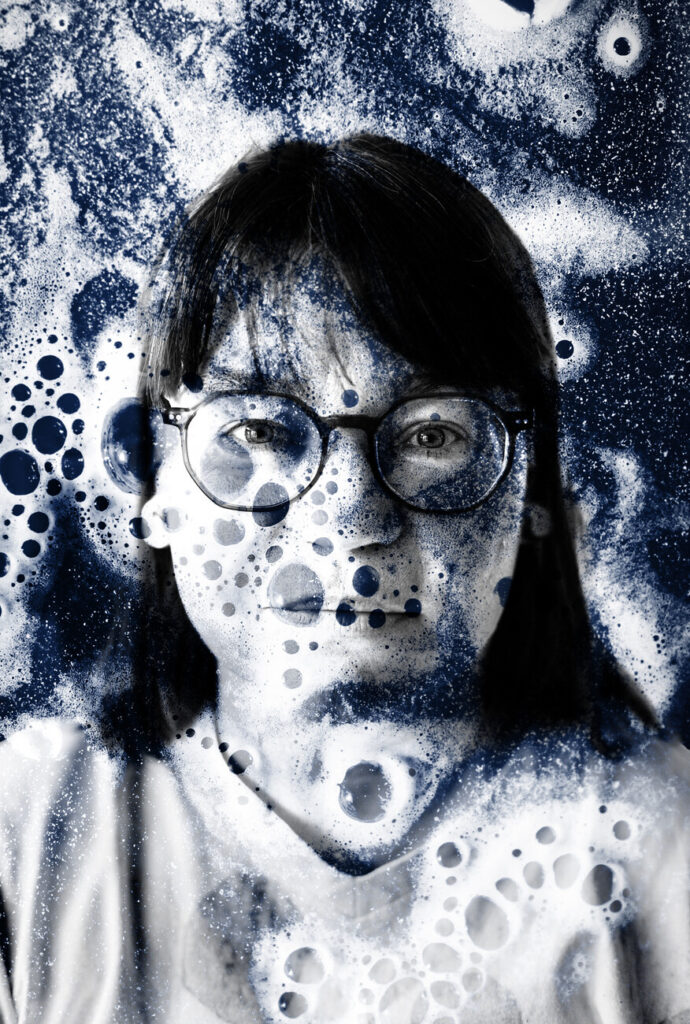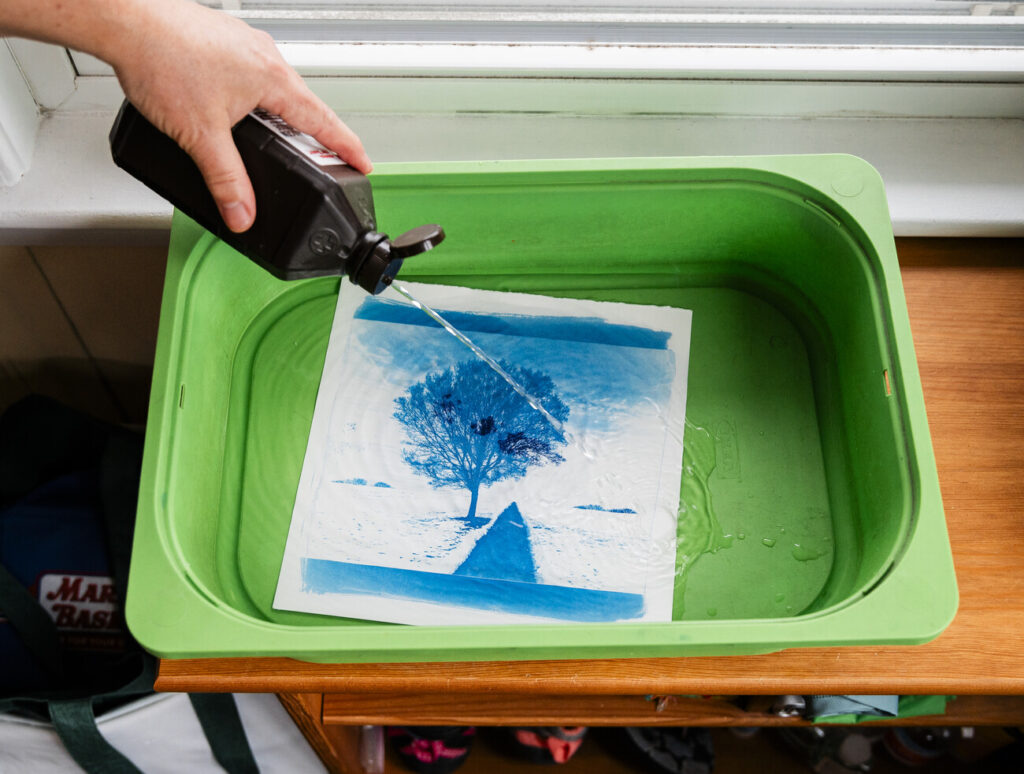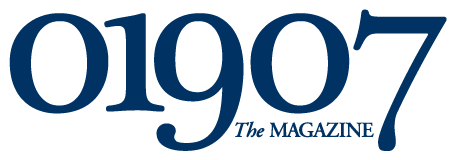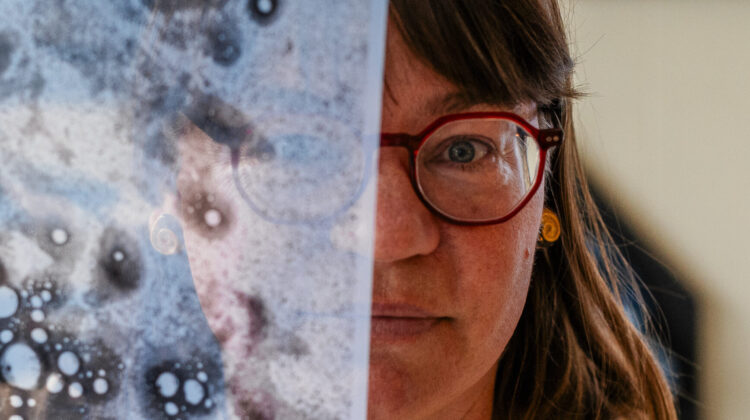Stefanie Timmermann’s art style has varied widely throughout her career.
The native of Germany first moved to Swampscott in 2009. Timmermann’s original medium of choice for her art was photography.
Since 2017, she has held numerous solo exhibitions, with local community arts center ReachArts Gallery playing host to the first two. Cyanotype photography, a technique that involves laying an object on paper coated with a solution of iron salts before exposing it to ultraviolet light and washing with water to create white and blue images, became a main form of Timmermann’s over time due to its inclusion of photographic and painting elements.
“I add acrylic paints and brush marks to achieve a rich tapestry that hovers between figurative form and fluid abstract shapes,” Timmermann said. “An exploration of form, line and color, the meditations in cyanotype and acrylic are foremost about a melding of deliberate photography and expressive painterly gestures.”
Timmermann’s cyanotype works headlined her exhibit “Blue Morphs” at Winchester’s Griffin Museum of Photography in 2021.
Her passion for physical environmental artwork expanded in 2019 after she spent time with artists in the village of Cazenovia, N.Y.
“It’s just so beautiful and pristine in lots of ways. It really drives it home how suburban my plot of land is and how close to Boston we are,” Timmermann said. “I really felt that even there, you could start seeing how the environment was being degraded.”
Timmermann most recently made her artistic presence felt in town with her “Bird Food” sculpture, created to raise awareness of beach pollution in an interactive way.
The 9-foot-tall piece, which Timmermann first created in 2023 after being inspired by observing herons at Judkins Pond in Winchester, is designed to look like one of the birds. Its hollow and transparent interior is meant to be filled with waste found in or near bodies of water.
“My sculpture’s name is not an accident — sadly, birds often mistake plastic for food and ingest it and it is estimated to be the result of over 1 million bird deaths a year,” Timmermann wrote on the exhibit’s website.
During the creation process, Timmermann restricted herself to only using certain materials.
“I decided since it’s an environmental piece that I would go ahead and limit myself to anything that I could source as a recycled, donated, or reused material,” Timmermann explained.
The heron’s interior structure was built using two tomato cages. Timmermann received donations of hardware cloth fencing and chicken wire from friends to construct the exterior.
“The only thing I bought was basically three rebar sticks,” Timmermann said.
A small fake fish, which Timmermann dug up on the beach, can be found in the bird’s mouth.
“Bird Food” was a centerpiece of Swampscott’s Earth Fest in April. During the event, Timmermann taught children the importance of recycling and the difference between what can be reused and what cannot.
